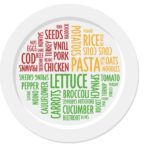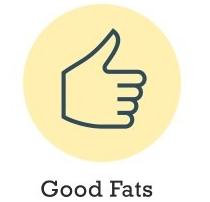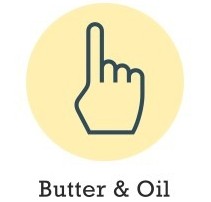HOW TO BUILD A HEALTHY PLATE AND PORTION GUIDES
It’s easy to get bogged down in the minutiae of nutrition; however, fundamentals of the make-up of your plate and portion control remain the most critical aspects of any diet.

The CP+R Healthy Plate, as pictured on the left, gives you a guide on how to build a plate and roughly how a plate should look if you spaced out the components.
Firstly, start with your vegetables (½ of a plate), examples of which can be seen above. These are full of micronutrients and fibre, which are great for lowering both cholesterol and blood pressure. High volume but lower-calorie means you feel fuller without consuming as much energy, which is great for body fat reduction.
Secondly, add your protein source (¼ of a plate) aiming for lean varieties as shown. Protein are building blocks of our tissues and are essential in the growth and repair process, both day to day and after exercise. Protein has the added benefit of being the most filling macronutrient, more so than carbohydrates and fats.
Third, add your carbohydrate source (¼ of a plate) which should be a complex variety, e.g. wholegrain. These are your body’s preferential fuel source for activity and brain function, so you can have more or less of these depending on what type of day you have lined up. Choosing wholegrain varieties will stabilise your blood sugars as they contain more fibre, which will help manage energy levels, aid digestion and lower cholesterol.
Finally, good fats; which are required as fuel for low-intensity processes as well as being key in hormone production, the formation of cell membranes and in promoting good cholesterol. Good fats are not specifically featured on the plate as they aren’t necessary in every meal and can often be used as an addition or come as part of the aforementioned sources. For example, in oily fish or dressing a salad with olive oil.
So, what happens if you have an enormous plate? Well, this is where this portion guide above can help you, and by using your hand as a guide makes it individual.

+ Palm-size
+ About the amount your body can use in one go to optimise tissue repair – needed at each meal

+ Fist-size
+ On very active days this could be two or on very sedentary days you may have a meal with only ½ (remember your body can store these so if you go big at one meal you can go small at another)

+ 2x Fist-size
+ In a lot of ways, the more, the merrier advisable at each meal

+ 2x Handfuls
+ A portion is actually quite big however, think about how much they wilt down as you cook them and again, great bang for your buck in terms of nutrients – advisable at each meal (depending on the dish and amount of veg already there)

+ Thumb size
+ As mentioned above good fats are typically, high in calories hence the smaller serving size – a thumb size is enough to give you the correct dose – only required once a day (but that’s not to say you can’t include them more)

+ Fingertip
+ Use sparingly
